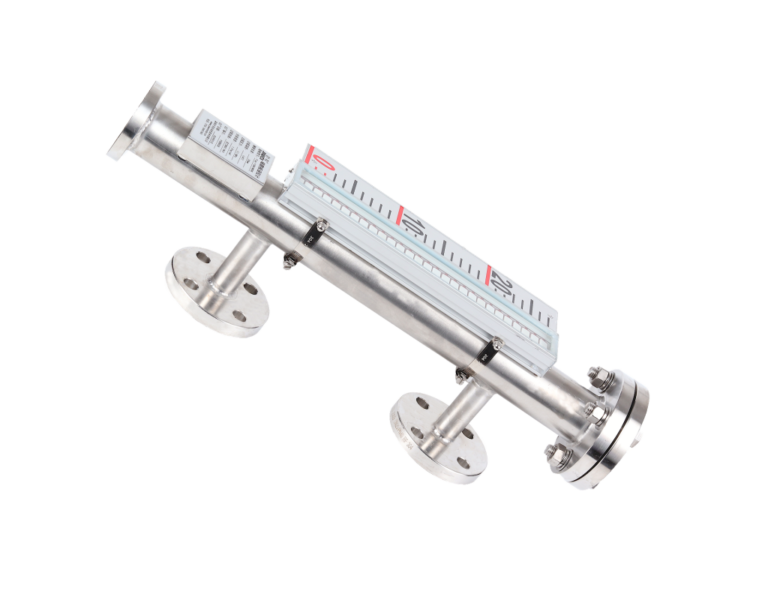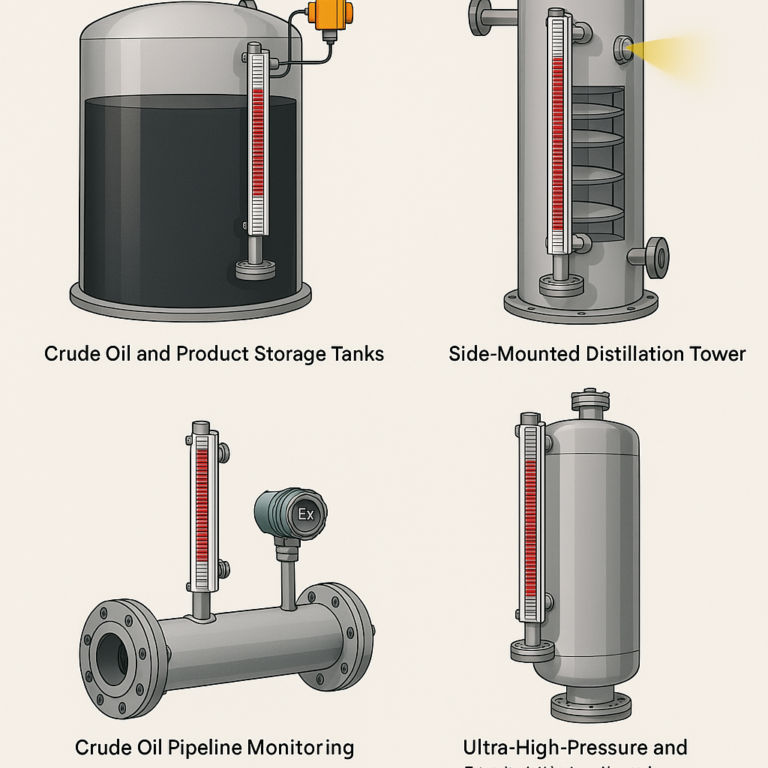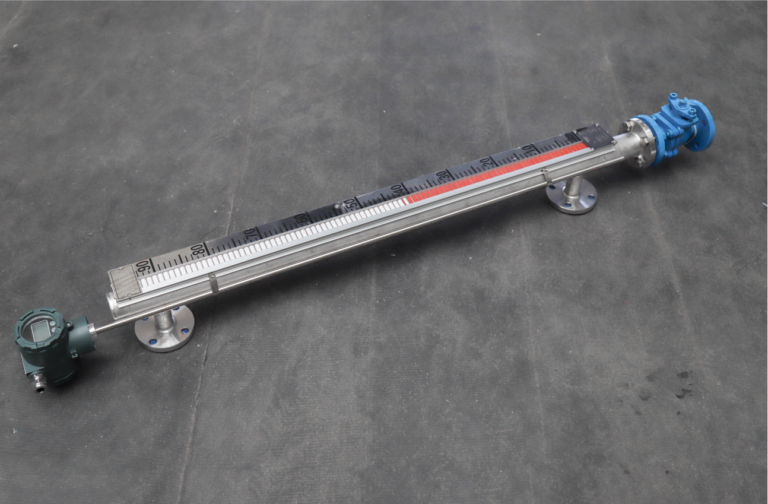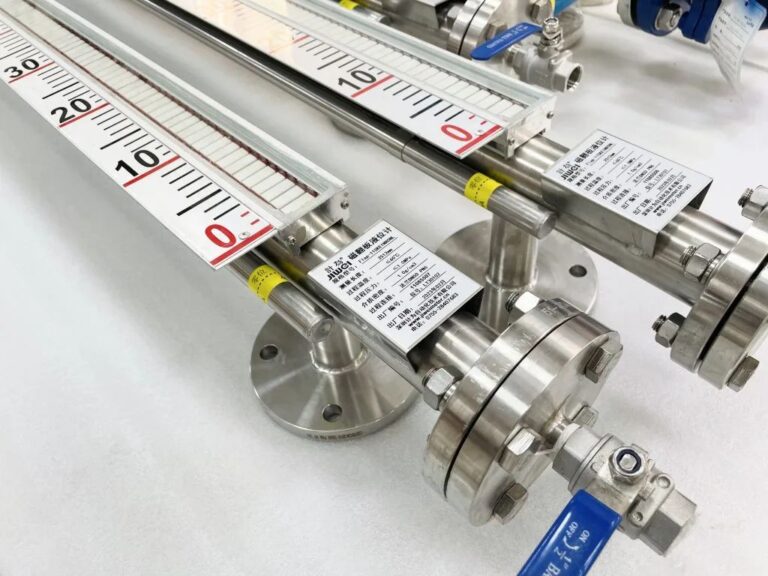Magnetic level gauges have become a critical component in the new energy sector due to their high reliability, clear visual indication, and adaptability to harsh environments. This article explores their applications, technical advantages, representative case studies, and challenges in various new energy domains.

1. Core Applications in the New Energy Industry
1.1 Liquid Level Monitoring in Energy Storage Systems
In lithium-ion battery storage tanks and vanadium redox flow battery reservoirs, magnetic level gauges employ non-contact magnetic coupling to avoid chemical corrosion and electrochemical interference, achieving a measurement accuracy of ±1%.
Example: In vanadium flow batteries, real-time monitoring of electrolyte levels is crucial to maintain energy conversion efficiency. Magnetic level gauges with remote transmitters can synchronize signals to BMS (Battery Management Systems), enabling auto-refill or alarm activation.
1.2 Hydrogen Production and Storage
Alkaline Electrolyzers: Magnetic level gauges with 316L stainless steel body and PTFE lining resist 30% sodium hydroxide solution. Their flameproof design (Ex d IIC T6) ensures compatibility with explosive hydrogen environments.
Cryogenic Hydrogen Tanks: For -253°C liquid hydrogen tanks, vacuum-jacketed magnetic level gauges prevent float sticking due to freezing and ensure safe refueling operations.
1.3 Biomass and Geothermal Energy Systems
Biodiesel Reactors: To handle viscous media like animal or vegetable fats, wide-diameter float chambers (DN50+) and self-cleaning designs are used to prevent fouling and ensure float movement.
Geothermal Hot Water Systems: For geothermal fluids over 150°C, Hastelloy floats and high-temperature sealing gaskets (up to 250°C) are applied to ensure long-term stability.

2. Technical Advantages Tailored for New Energy Applications
2.1 Core Performance Benefits
Strong Anti-Interference: Magnetic coupling avoids direct contact with electrochemically active fluids, making it suitable for corrosive or conductive environments.
Wide Range Capability: Supports measurement ranges from 0.5 to 15 meters, ideal for large energy storage or fermentation tanks.
Energy Efficient: Operates passively via magnetic float, no external power required for on-site display, aligning with low energy consumption targets.
2.2 Functional Expansion
Smart Integration: Equipped with Reed-11 transmitters, outputting 4-20mA or RS485 signals for SCADA/EMS system integration.
Extreme Environment Adaptability:
Explosion-proof versions for hydrogen and biogas scenarios.
Insulated variants with steam jackets or electric tracing for biomass tanks.
2.3 Installation & Maintenance
Supports top/side mounting and flange connection for complex installations (e.g., underground tanks).
Modular design allows quick float/seal replacement, extending maintenance cycles to 3-5 years.

3. Representative Case Studies
3.1 50MW/100MWh Flow Battery Energy Storage
Gauge with 0-3m range and ±1% accuracy, coupled with a refill pump control system.
Result: Energy efficiency increased to 82%, with annual failure rate below 0.5 incidents.
3.2 Alkaline Water Electrolysis Hydrogen Production
High-pressure (30MPa) alkaline loop system using explosion-proof gauge (316L + PTFE).
Achieved continuous operation for 5000+ hours without leakage, level error < ±2mm.
3.3 Biogas Fermentation Tank
15% solids slurry monitored using high-buoyancy float (density 0.8g/cm³) and self-draining structure.
Maintenance cycle improved from 1 month to 6 months.

4. Challenges and Solutions
4.1 Media Physical Properties
Ultra-pure Liquid Hydrogen: Very low density (70 kg/m³) causes buoyancy issues.
Solution: Use custom hollow titanium alloy float with reduced density (0.6 g/cm³).
Particulate-Laden Media: Risks of float blockage.
Solution: Apply scraper-style chambers or periodic high-pressure cleaning.
4.2 Extreme Temperature Effects
Cryogenic Hydrogen: -253°C causes traditional seal materials to become brittle.
Solution: Use polyimide sealing rings and cryo-lubricants.
Geothermal Fluids: High temperatures cause magnetic degradation.
Solution: Use samarium-cobalt magnets (tolerant to 350°C) instead of NdFeB.
4.3 Smart Monitoring Needs
Solution: Incorporate IoT modules (e.g., temperature compensation, AI-based alarms) to detect abnormal levels and predict gauge lifespan, with response times as low as 50ms.

5. Conclusion
Magnetic level gauges offer high adaptability across various new energy applications. With continuous innovations focusing on precision, intelligence, and extreme-environment resistance, they are poised to become essential tools in clean energy conversion and safe storage operations as global installations continue to rise.
